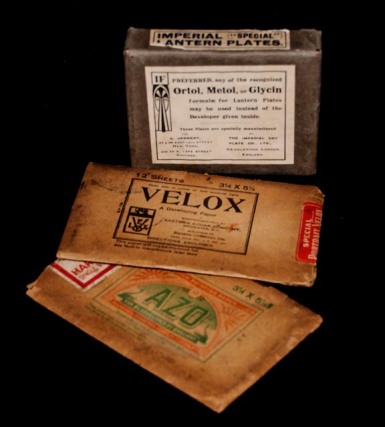The Silver Gelatin process, is an evolution from whats historically called the dry Collodion process, or simply the dry plate. I haven’t made or used any dry-plates, instead I tend to use film with some of my dry plate cameras. The Silver Gelatin process is used to create modern film and Develop Out Paper or simply DOP as compared Printing Out Paper, or POP. The most Common forms of POP are identified by the binding agent used, such as Albumen or Salt.
It’s important to note, That when I state that when I’ve identified a print as an Albumen, Salt or Silver Gelatin Paper, That these, are hand done prints that have been manipulated via hand process appropriate to the specific process, Then scanned they are not digitally manipulated. to obtain a print, I use film or glass negatives created through the wet collodion process. The featured image of the Golden Gate Bridge was taken on film using an Kodak Ektar 127mm lens, with our 4×5 Ansco Universal, and has been printed on Silver Gelatin Paper. I’m stating this information to hopefully prevent confusion between, can be considered as a Digital Pigment Print or DPP. This is also why historical type prints cost more, than a digital print from my Zenfolio page

History of the Silver Gelatin Process:

The Silver gelatin process is the photographic process used with currently available black-and-white films and printing papers.
The silver gelatin process was introduced by Richard Leach Maddox in 1871 with subsequent considerable improvements in sensitivity obtained by Charles Harper Bennett in 1878.
Silver gelatin print paper was made as early as 1874 on a commercial basis, but it was poor quality because the dry-plate emulsion was coated onto the paper only as an afterthought. Coating machines for the production of continuous rolls of sensitized paper were in use by the mid-1880s, though widespread adoption of silver gelatin print materials did not occur until the 1890s. The earliest papers had no baryta layer, and it was not until the 1890s that baryta coating became a commercial operation, first in Germany, in 1894, and then taken up by Kodak by 1900.
Although the baryta layer plays an important part in the manufacture of smooth and glossy prints, the baryta paper of the 1890s did not produce the lustrous or glossy print surface that became the standard for fine art photography in the twentieth century. Matting agents, textured papers, and thin baryta layers that were not heavily calendered produced a low-gloss and textured appearance. The higher gloss papers first became popular in the 1920s and 30s as photography transitioned from pictorialism into modernism, photojournalism, and “straight” photography.
for many of my prints, I like High Contrast – thus I tend to focus on that effect, this image  was captured used 35mm film, my preference is medium to large format film, but I do use a 35mm camera as well, and much the same with any film I use, I develop it myself, it was then printed on Silver Gelatin paper.
was captured used 35mm film, my preference is medium to large format film, but I do use a 35mm camera as well, and much the same with any film I use, I develop it myself, it was then printed on Silver Gelatin paper.
